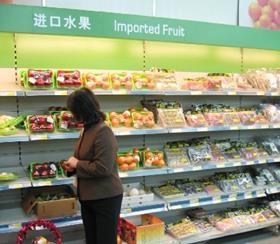
China’s food retail sector has advanced in leaps and bounds in recent years, growing even faster than the country’s quickly expanding economy and presenting opportunities for imported food if traders can overcome logistical challenges.
That was one of the key messages to come from a report released last week by the USDA’s Global Agricultural Information Network (GAIN), run by the department’s Foreign Agricultural Service.
The report highlighted an average 17 per cent growth in urban Chinese consumer spending on food per year in the four years up to 2008, primarily the result of rising incomes, growing concerns about health and food safety and increasing interest in diet diversification.
China’s food and beverage sales in 2008 were worth Yn914bn, or roughly US$132bn based on average exchange rates, the report said.
With the growing strength of the yuan, sales growth between in 2007 and 2008 in US dollar terms hit 26.2 per cent. While growth was forecast to have been slightly lower in 2009, the figure was still expected to be significant.
The lack of an organised, nation-wide coldchain or logistics infrastructure was presented as the major challenge for imported food.
Of particular mention was the amount of risk that distribution companies had been forced to take on in their dealings with China’s powerful retail chains, causing importers and distributors to be extremely cautious of new products.
Imported fresh produce had much deeper penetration than other products, according to the report. Hypermarkets, a field dominated by foreign chains, had the highest ratio of imported fresh produce, although supermarkets were beginning to ramp up fresh produce offerings to compete, particularly in Shanghai.
The report explained in-store sampling promotions were an important way to increase consumption of new products, although such promotions could incur significant costs for the importers or distributors running them.
Second and third-tier cities were presented as important opportunities for growth in import sales, provided the lacklustre distribution system outside the first-tier cities could be overcome.
Looking forwards, the report said traditional wet-markets were being slowly phased out in the face of government pressure, and retailers were increasingly exploring direct-sourcing opportunities.



